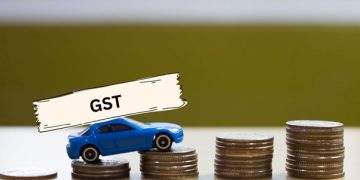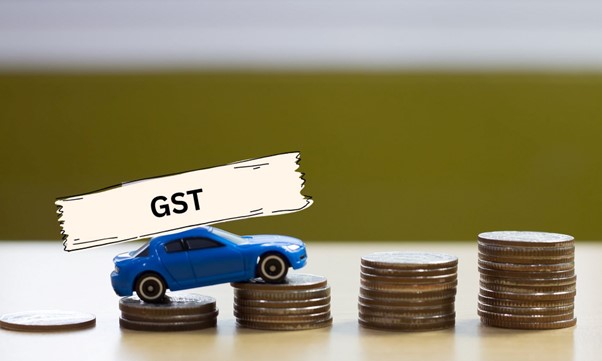If you’ve been considering purchasing one of the new cars this year, the Goods and Services Tax (GST) on cars in India has to be understood more than ever. In 2025, the GST Council introduced changes that make some vehicles less expensive and others slightly more expensive. This article lays out information about the GST rates on cars in India, what the new changes mean for buyers, and consequently how new car prices are affected on the road basis.
What Is GST on Cars in India?
GST is a tax imposed on goods and services, including the manufacture of automobiles. It was brought in to replace a long chain of multiple indirect taxes, such as excise duty and VAT, thus simplifying tax calculations and enhancing transparency in car pricing. But GST on cars is not levied at one uniform rate for all cars. In India, it varies largely considering the type of vehicle and its engine capacity, fuel type, and length of the car.
The GST Council, in 2025, altered the GST structure for cars to lessen the tax burden on small cars while imposing rates on luxury and big vehicles.
Updated GST Rates for New Cars
With effect from 22 September 2025, there is a structured manner in which GST is levied on cars in India:
| Category | Engine Capacity & Length | GST Rate |
| Small Petrol, Petrol Hybrid, LPG, CNG Cars | Up to 1200 cc & length up to 4000 mm | 18% |
| Small Diesel & Diesel Hybrid Cars | Up to 1500 cc & length up to 4000 mm | 18% |
| Large Cars & Luxury Cars | Above 1200 cc petrol or length > 4000 mm | 40% |
| Electric Vehicles (EVs) | All sizes | 5% |
This reform brought down GST for most small and mid-sized petrol and diesel cars from 28% plus cess to a flat 18%, significantly lowering their prices. Luxury cars now attract a 40% GST rate, eliminating additional cesses but making the tax simpler.
Electric vehicles enjoy a reduced rate of 5% GST, hence motivating green mobility.
How Does GST Affect The Price of New Cars?
GST comes included in the ex-showroom price, which means the sticker price first seen by the customer already includes GST. A lower GST on smaller cars means lower sticker prices for them, making these vehicles more affordable.
For instance: A petrol car usually cost Rs. five lakhs before tax and had a combined GST and cess of about Rs. 1,45,000. Now, with an 18% GST and the removal of the cess, the tax is only Rs. 90,000. This makes the selling price really much cheaper!
Having the higher 40% rate removes varying cesses under one umbrella, thereby simplifying the system and sometimes reducing the tax burden compared to the earlier combined rate.
What Does This Mean for People Buying New Cars?
The small cars will be affordable: The reduction in GST has reduced the purchase price for these small, budget-friendly cars and made them quite attractive for the first-time buyers and families.
Simplified pricing: Tax calculation is cleaner, leaving no room for any confusion due to the presence of multiple cesses.
With the GST rate of just 5%, electric vehicles garner an attractiveness, and therefore, the CNIFA nurtures green transport.
Clearer tax structure for luxury cars: Higher tax but simpler, helping the buyer plan upfront.
Other costs involved beyond just GST in buying a new vehicle
While GST impacts the listed price of a car, on-road price is what has to be paid to drive the car home and this includes:
– Registration & Road tax (depends on state and price of the car)
– Insurance premiums (calculated on the car’s Insured Declared Value or IDV)
– Handling and logistics charges
Since road tax and insurance are computed as per the ex-showroom price of the car, any decrease in GST thus reduces these charges, giving an additional saving opportunity on the final bill.
Effect on Loan and Financing New Cars
When you take out a loan for buying the new car, the amount of loan includes the on-road price of the car. Therefore, as GST affects a car for a reduction in the ex-showroom price, it reduces the size of the loan needed. Smaller loans imply:
Reduced Equated Monthly Instalments (EMIs)
Easier loan acceptance
Less interest being paid in the course
If you are setting aside the budget for your brand-new car, incorporating the GST reduction into your car plan would make you a smart shopper.
Final Takeaway for New Car Buyers
The new GST changes of 2025 have made new car purchases cheaper, with the greatest effect on small petrol, diesel, and hybrid vehicles. These cars get a neat GST of 18% instead of the earlier regime of an average 28% plus cess, and millions of buyers get relief.
Luxury and big cars will see a new 40% GST replacing the cess-ridden old one, which will now do away with the complicated cesses and facilitate easy tax calculations.
The 5% GST on electric cars will continue to keep them attractive and encourage India’s policies for fostering a cleaner mode of transport.
In new car shopping in India, understanding the opportunities and intricacies of GST on cars in India will help accrue better financial decisions, specific budgeting, and more direct savings on your new car.

















































